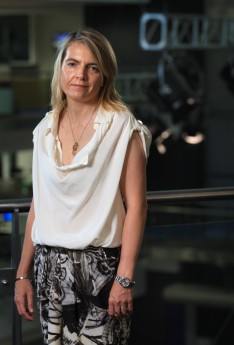Has the John Stephens case actually uncovered TV industry collaboration?
While Australia’s TV networks publicly profess to hate each other there are signs of some behind the scenes co-operation, asks Alex Hayes.
The last two days have seen some courtroom drama any of the free-to-air TV networks would have been proud of, with Seven and Ten going head-to-head in a battle over 67-year-old programmer John Stephens.
But underneath the rivalry, accusations of skullduggery and double-crossing have we seen a signal that the Australian TV market is actually closer to consensus than they’d have us believe?
One of the most interesting morsels to fall from the burgeoning table of evidence at the NSW Supreme Court in the last two days came from Seven West Media’s chief operating officer Nick Chan.
In an email strategising how Seven could keep hold of Stephens Chan suggested: “Why don’t we offer Stevo (Stephens) the same money for two days to work on Stream Co? Nine has as much a vested interest in him not going as we do … he won’t be the first to walk away on a contract.”
What is Stream Co?
Stream Co is the working name for Nine Entertainment Co’s planned Netflix-style video on-demand offering which is expected to be launched by the end of the year, and has experienced digital and programming heads including Mike Sneesby as CEO and Les Sampson as head of acquisitions. Nine has always made it clear it thinks the service needs to launch quickly, before foreign services like Netflix, Amazon and Hulu make their push into the market, and it would be best for local operators to join forces, combining their might.
So, in effect what we have is an admission from a very senior Seven exec that they are in, or very close to, an agreement combining the financial might of two of Australia’s biggest TV companies.
On the record Nine insists it has no partners on the venture at the moment. A team of executives is understood to be in the US at the moment during the upfront season to start negotiations for rights for shows, with the network not limited by its agreement with Warner Bros studios there as video-on-demand rights are treated as a separate class from normal broadcast rights.
Still, their hand would be strengthened if they had the contacts and connections of execs from other local networks, say someone like John Stephens, to help with the negotiations.
And what of Ten? They are also refusing to comment on this venture, but head of digital Rebekah Horne, who was spotted entering Seven’s offices in Pyrmont yesterday, has repeatedly and publicly asserted the industry needs to come together for a single catch-up platform to engage viewers. This, in effect, is an extension of that idea.
The sticking point for cash-strapped Ten may be the price of entry. A venture like this needs some serious money behind it to buy-up some premium international content which would get younger viewers interested, and it would seem unlikely Nine, or Seven, would give their competitor a free-kick by letting them have a cheaper stake in any venture.
However, the network is struggling for ratings and advertising revenue, as today’s release of Standard Media Index data shows, which could make it difficult to justify to its board investing millions of dollars in what some might see as a punt in the dark.
The case for streaming services
As we’ve seen on Mumbrella in the last few weeks when we have looked at the problem of piracy there is an appetite in Australia for streaming services which provide low-cost, rapid, access to premium shows like Game of Thrones. A quick scan of the comment thread on Foxtel’s opinion piece tells you people will pay for premium content, if they feel the value is right.
Quickflix was the first local player in the space and claims to have increased its subscriber base massively, but many cite its old back catalogue and lack of premium shows being fast-tracked as problems with the service.
Foxtel has launched its Presto service, but that only gives access to a database of old movies at what many say is an uncompetitive $19.99 per month, with rumours circulating it has failed to take off with subscribers.
Meanwhile its Play service, which provides cheaper access to its channels on digital platforms, is criticised for forcing people to subsidise channels they don’t want to watch in order to get access to a few shows they do want. However, a big deal it has struck with HBO means it has a monopoly on the network’s premium franchises, such as Game of Thrones, although it is not clear exactly how long that agreement lasts.
It is not impossible Foxtel could look to get on board with the free-to-air channels, and that might also persuade SBS and the ABC to tip their hats into the ring, opening up even wider possibilities for the platform.
Whilst Netflix, Amazon and Hulu are all mooted to be looking at moves into the Australian market there is scope for the powerful free-to-air providers to make a play. Certainly they would have the marketing clout and audience to generate mass-market scale for a premium service, but the sticking point will come when they try to get people to pay for content they can get for free.
Price, then, will be a huge issue. But as we’ve seen with music streaming services there is an appetite for premium content on-demand, and it does not necessarily preclude ad-funding on the platform. There are a lot of advertisers who would love to get access to the kind of data this service could provide.
The launch of Freeview’s HbbTV offering, which has been pushed back from this month, might be a stopgap measure for the networks in terms of looking to the future, but with the value of linear channels being increasingly eroded by online competitors, networks are fooling themselves if they think the future lies in the kind of broadcast TV they’re pursuing now.
Alex Hayes is editor of Mumbrella.






Why not allow Nine, Seven and Ten to sub hire Netflix and that way we all get a benefit….
User ID not verified.
As the content producer segment continues to consolidate, what happens when the producers, who are the IP owners of most of the content, decide they can do this better than the broadcasters and launch their own services? If the mooted Core / Endemol / Shine Group super indie, together with Fremantle, Zodiak, All3 Media etc got together to launch a multi-market SVOD service the networks’ stream co type services could be still born?
User ID not verified.
Dre, that would be like Arnotts opening supermarkets with other fmcg companies to distribute without involving coles and woolies. Never going to happen, for a billion reasons.
User ID not verified.